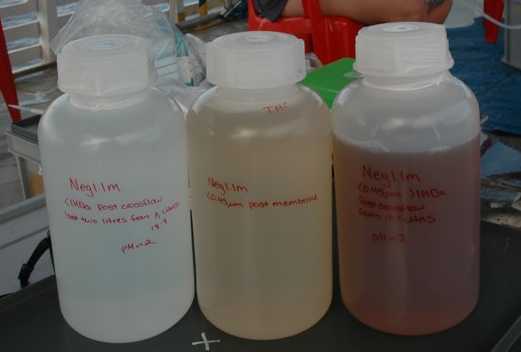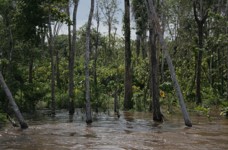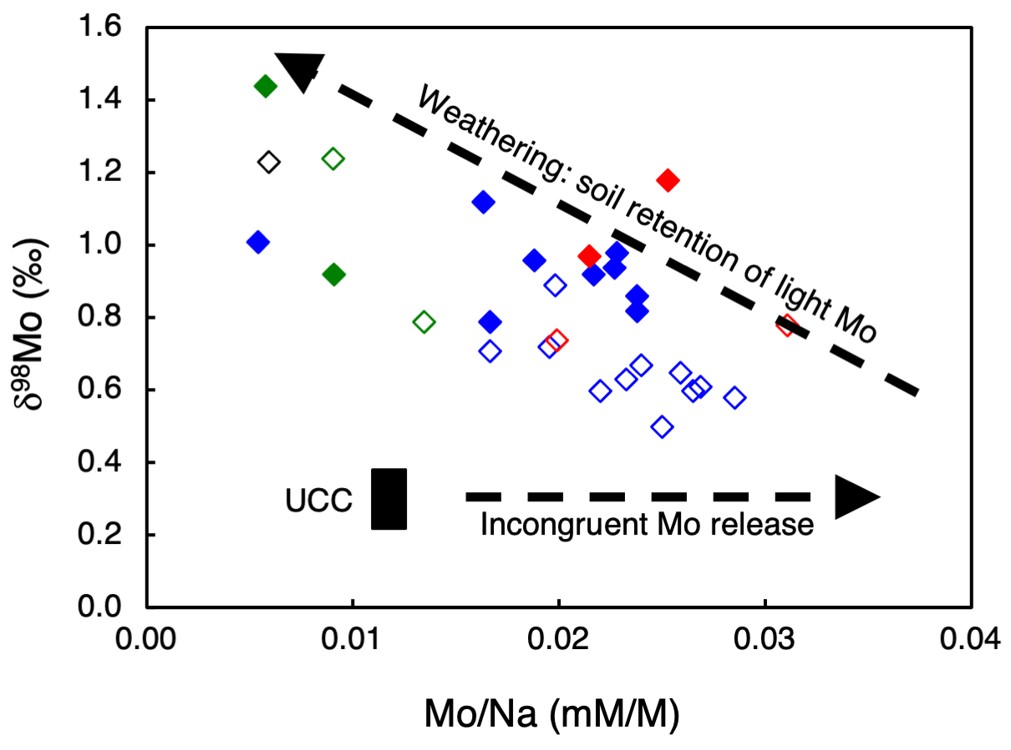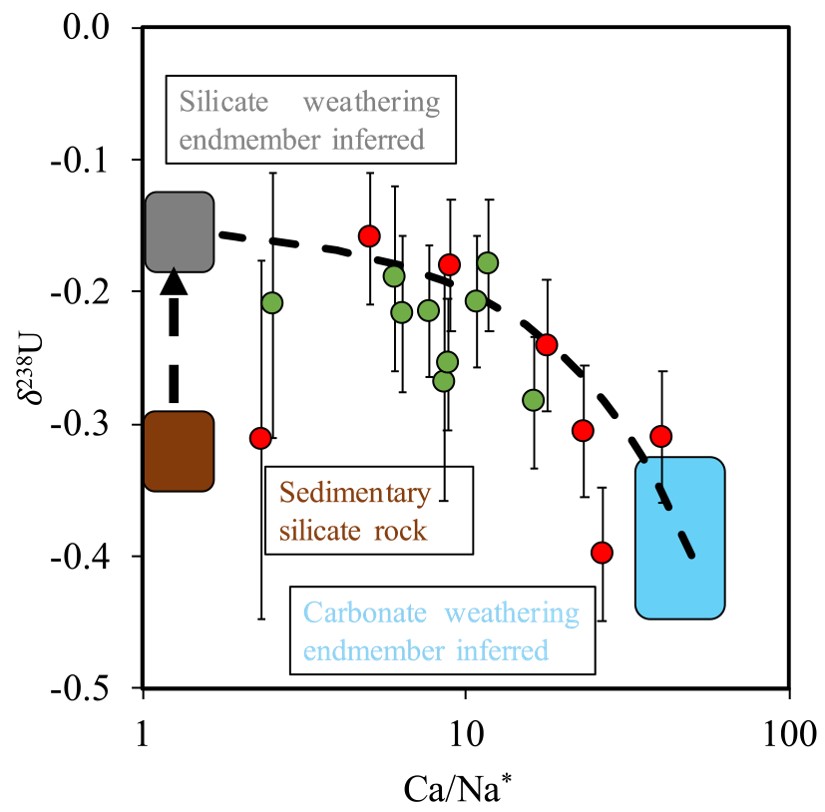Geochemistry and isotope geochemistry of rivers
The dissolved and particulate material transported by large rivers provide a spatially-integrated view of the chemical and physical evolution of landscapes. They transport the products of chemical weathering to the oceans, including CO2 taken up from the atmosphere, and represent one of the main input fluxes to the dissolved pool of the oceans, including elements essential for life. River chemistry is increasingly perturbed by human activity, requiring the deconvolution of natural and anthropogenic impacts. Our group has been closely involved in the quantification of this transport vector, providing the starting point for modern and past mass balance between sources and sinks to the ocean. We focus, in particular, on trace metals and their stable isotope systems.
Mo and U isotopes in rivers from tropical and high latitude settings cannot be explained by the source rocks alone. In common with many isotope systems, the rivers are shifted to heavy isotope compositions because of the retention of light isotopes in secondary minerals in soils.
Student projects
- Revels, B.N. (2018). The riverine delivery of trace metals and their isotopes to oceans: new insights from Mo, Ni. Fe and Zn in the Amazon Basin. Doctoral thesis, ETH Zurich.
Selected publications
- Revels, B.N et al. (2021) external pageGeochimica et Cosmochimica Actacall_made 293, 344-364.
- Revels, B.N et al. (2021) external pageEarth and Planetary Science Letterscall_made 559, 116733.
- Charbonnier, Q. et al. (2023) external pageChemical Geologycall_made 625, 121409.





